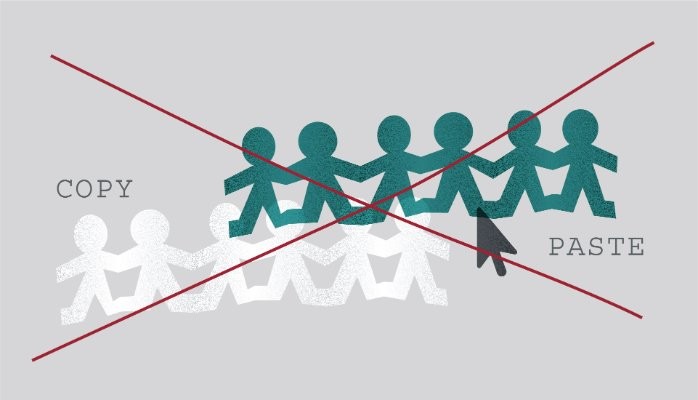
Would you say “yes” to an invite from a venture capitalist firm to join some of the smartest people and learn about building an engaging corporate culture?
The answer is not surprising. Rooms fill up on this topic. And of course, I rarely turn down a chance to debate, share, and learn what makes teams thrive at work.
At one of these recent gatherings, Steve Cadigan (the former head of HR who brought LinkedIn public) asks this group of People/HR leaders, “How many here have been asked to just do what Netflix did?”
Hands shoot up throughout the room. Nervous laughter follows.
This is where I fight rolling my eyes (I have to remember I am an adult) and pause to simply ask,
“Hmmm…do we think the copy-and-paste function works when applied to culture?”
Intellectually, even the founders asking for this approach know that corporate culture is not a copy-and-paste function. But there are some human-centered truisms to the Netflix’s Slideshare that somewhere in HR-policy land got lost, which is in part why it grew to be viewed by over 12 million people and Sheryl Sandberg called it “one of the most important documents to ever come out of Silicon Valley.”
Patty McCord, who wrote and re-wrote the Netflix deck with Reed Hastings for years before they published it, told me that although it was published in 2009…it evolved for years before, and it continues to evolve as the culture does. She said it’s always been a living document, so anyone copying-and-pasting is missing a huge piece of what makes it valuable—it is always a work in progress.
Your company’s culture is also a work in progress.
So unless you want to clone Netflix’s culture from 2009, consider the following:
1. What your company stands for (and what you stand against). This is learned—and reinforced—by who the company recognizes, promotes, and lets go.
2. What approaches/rules to work *actually* work (pay attention to neuroscience and social science for how people do their best work both individually and as a team).1. What your company stands for (and what you stand against). This is learned—and reinforced—by who the company recognizes, promotes, and lets go.
3. And here’s the tricky part…question how your answers to #1 and #2 change and evolve…perhaps yearly or more frequently depending on how quickly your team/company is growing.
Apple and Google have completely different cultures, and both are doing just fine. There is not a “best practice” (which is one of Patty’s least-favorite phrases…) to copy and paste.
Make it real, make it your own, and most importantly, be intentional about your culture so it’s filled with the purpose you want for yourself and your team.






